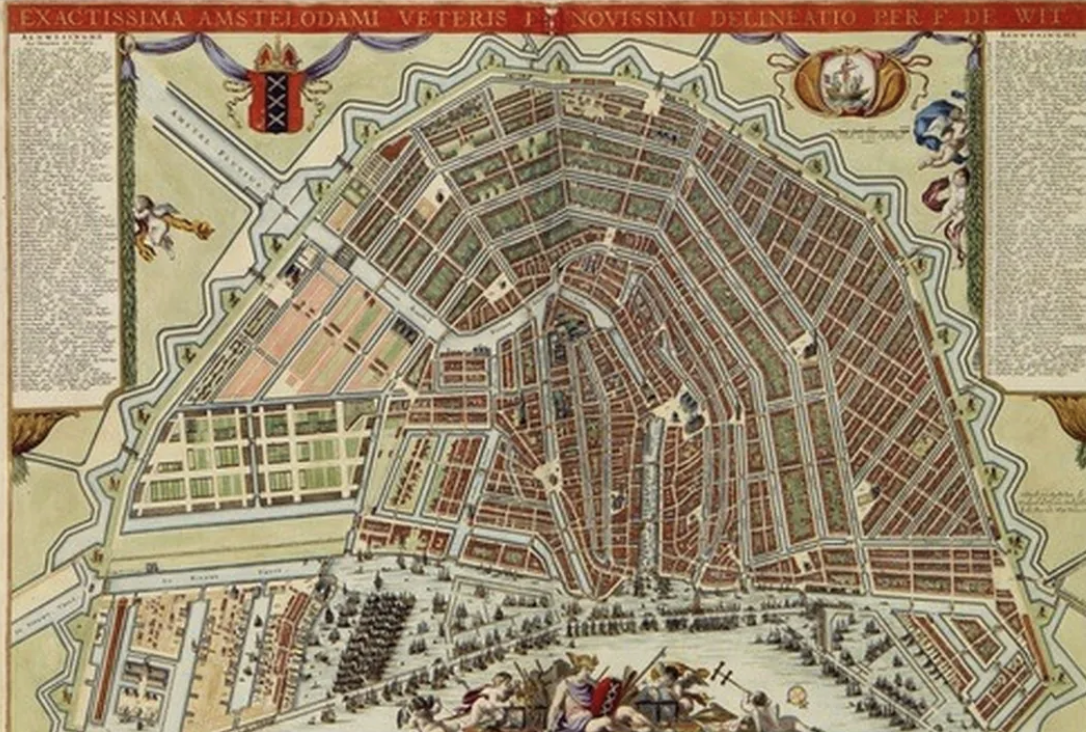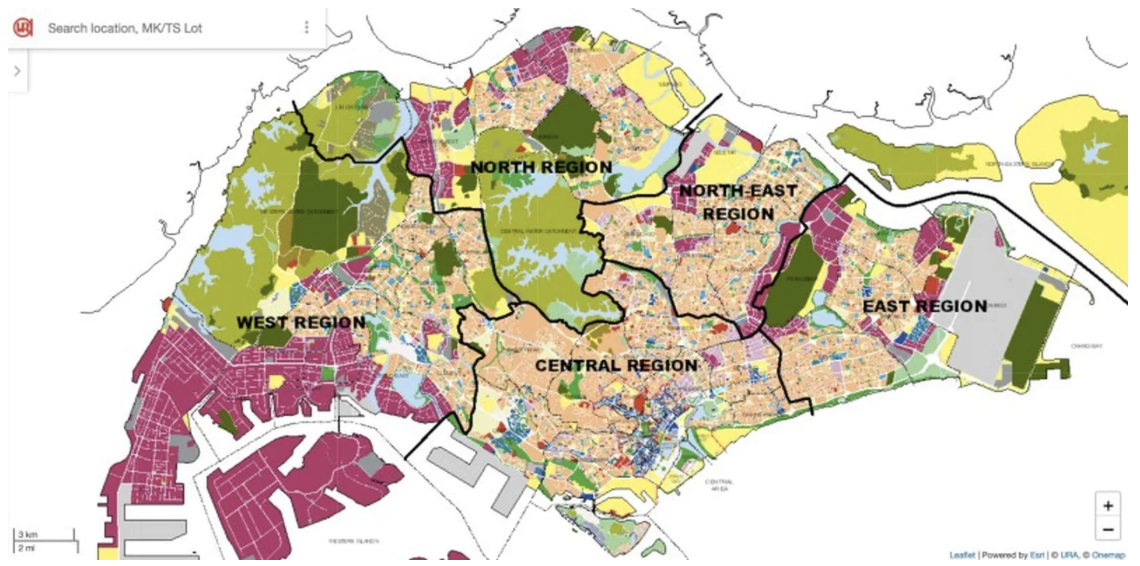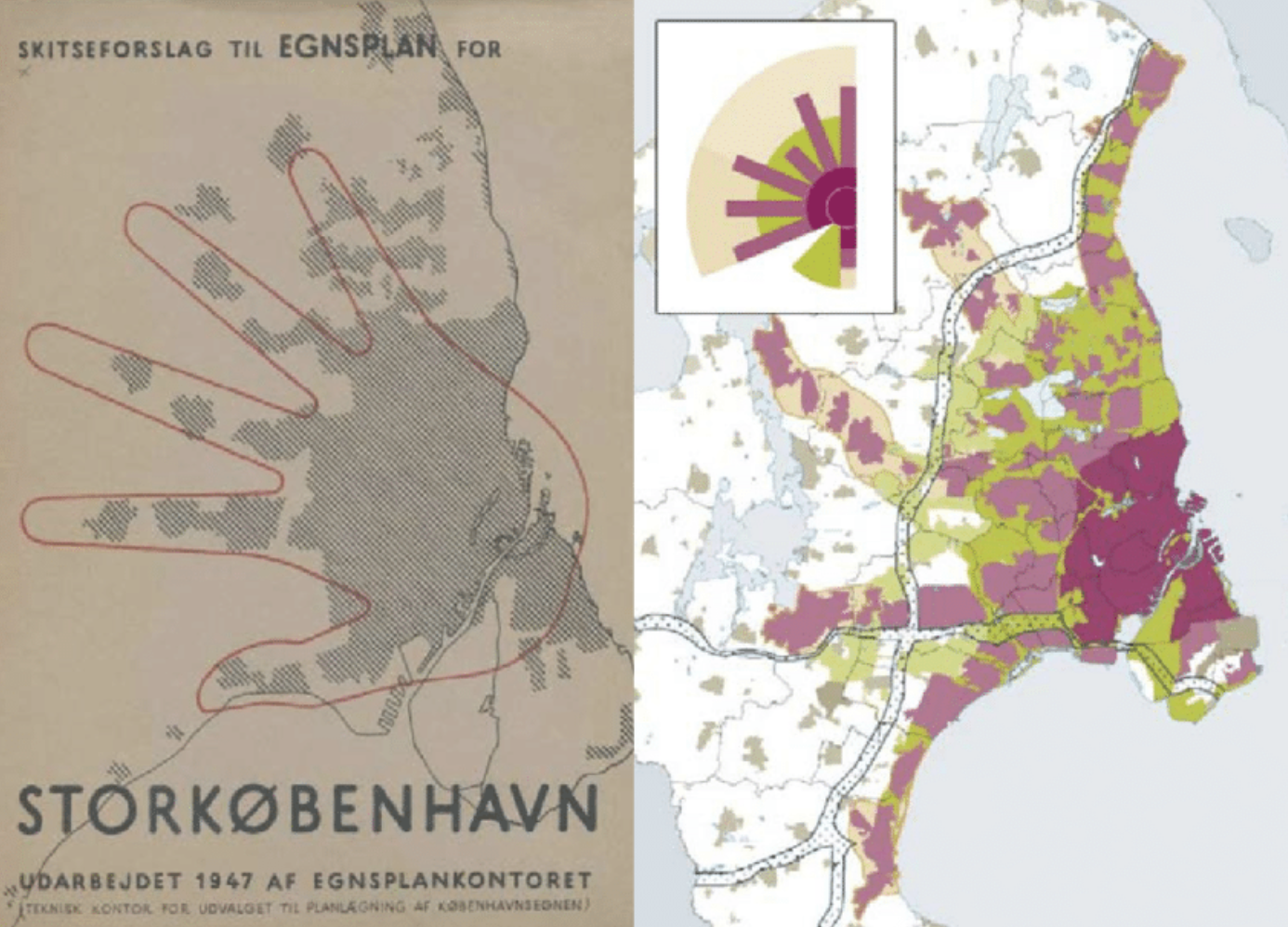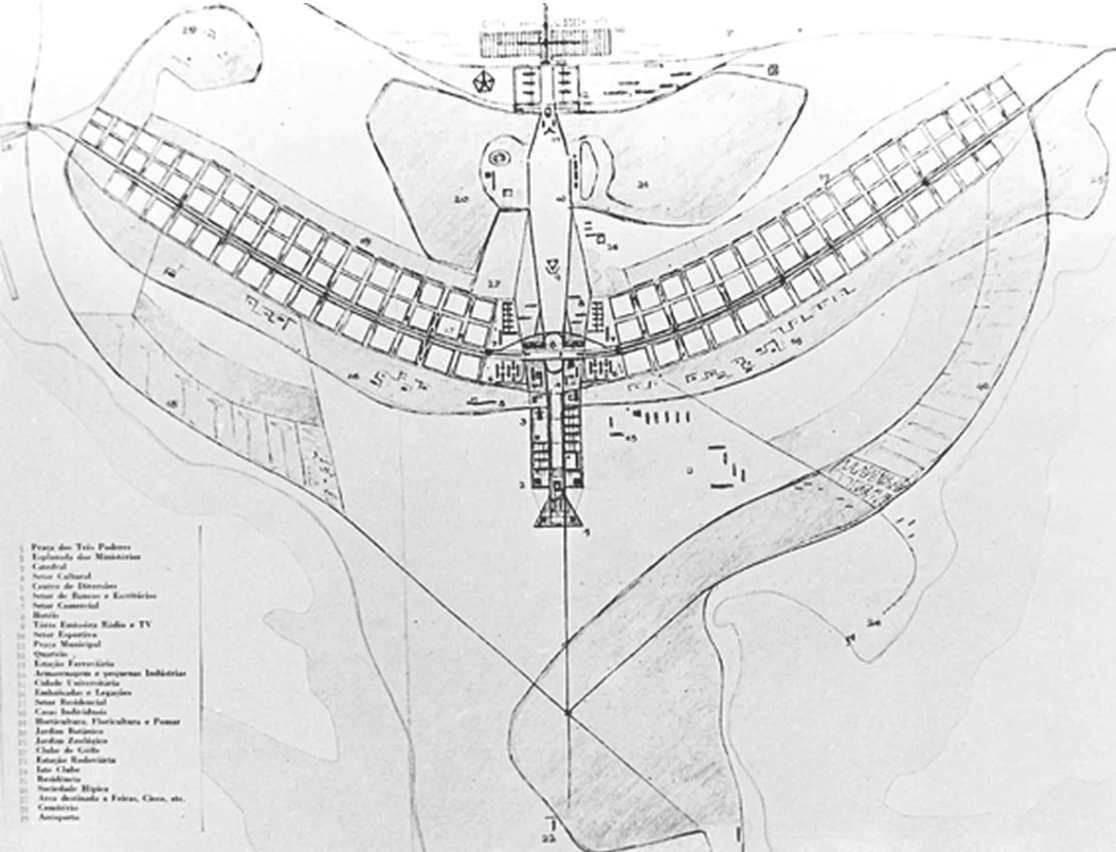Emaar Economic City (EEC) Board Workshop
November 24, 2025 at Riyadh KSA

Lessons in City Building
Cities have emerged over centuries, sometimes with careful design, and otherwise with chaotic sprawl. Here are some of the best designed cities, starting with Amsterdam, which I love for its canals, but also the cultural and human vibrancy of its city centre.
Amsterdam, Netherlands: The dutch city is planned along the four concentric canal rings initiated in the 17th century. These canals have given the city a definite structure whereas the housing is built in clusters to lend lateral support. Public housing in the city is designed to clearly define the urban character, with special attention paid to the façade design that is now the image of the city. The excellence of Dutch planning is reflected in the emphasis on connectivity, well designed public spaces for a higher standard of public life.

Singapore: The Asian city-state has seen rapid economic development and high quality of public life owing to an efficient government and city planning strategy. Divided into a series of partially self-sufficient precincts, each precinct is governed by four regional centers other than the central government. These planning strategies have been successful in creating quality affordable housing, integrating green spaces, enhancement of mobility and transport services while sustaining a flourishing economy.

Copenhagen, Denmark: The urban plan was conceived as a ‘Five Finger Plan’ to build an integrated network of urban infrastructure, transport and green spaces. The key element of the planning is the location of people and their movement through the plan. The development is condensed along these lines to encourage the use of public transit networks. The emphasis on sustainability, the high quality of public life, a sensitive approach to development is testament to the success of the urban planning and execution in Copenhagen. Today it seeks to be a “Doughnut City” living with in the limits of environmental impacts, and designed to do more socially.

Washington DC, USA: The urban plan is known as the L’Enfant Plan named after Pierre Charles L’Enfant, the original urban planner for the city. The city is regulated with north-south and east-west running streets intersected by broader ‘avenues’ that would create rectangles within the grid for memorials and open spaces. The plan also establishes the National Mall – a landscaped public park, the extents marked by the United States Capitol and Lincoln Memorial on each end.

Brasilia, Brazil: The city’s urban plan developed by Lucio Costa is famously known as a ‘Pilot Plan’ owing to its plan that is defined by two intersecting axes. The monumental long axis is the location of all the government buildings, whereas the residences of the government employees are located along the cross axis. These residences are within areas known as the ‘super-quadra’ that also has amenities such as shops, hospitals and schools. However, Brasilia was envisioned largely as a city for automobiles and does not consider pedestrian mobility.

Innovating Cities
Flying into Astana, I didn’t know what to expect. I had previously visited Almaty, the former capital which was historic but crumbling, and certainly not giving the image of a dynamic, young nation. That all changed in Astana, with its video-walled skyscrapers and ultramodern infrastructure:
Astana, Kazakhstan: Now known as Nur-Sultan, it is the capital of Kazakhstan, developed to promote economic growth and modernisation, and a vastly different look and feel to the historic former capital of Almaty.
- Modern Architecture: Features iconic buildings like the Bayterek Tower and the Khan Shatyr Entertainment Center.
- Economic Hub: Focus on attracting investment and fostering economic development.
- Cultural Institutions: Hosts museums, theaters, and cultural centers. Success Factors:
- Strategic Relocation: Moving the capital from Almaty to Astana helped distribute economic activity more evenly across the country.
- Investment in Infrastructure: Significant investment in modern infrastructure and amenities.
Brasília, Brazil: the Latin American capital, designed to promote the development of the country’s interior.
- Modernist Architecture: Known for its unique and innovative architectural designs by Oscar Niemeyer.
- Government Hub: Houses Brazil’s federal government institutions.
- Planned Layout: Designed with a distinctive airplane-shaped layout.
- Visionary Design: Innovative urban planning and architecture set Brasília apart.
- Economic Development: Helped stimulate economic growth in Brazil’s interior regions.
Canberra, Australia: the capital city, designed to be the political and administrative centre of the country.
- Government Buildings: Home to the Australian Parliament House and other key government institutions.
- Cultural Institutions: Hosts national museums, galleries, and cultural centers.
- Planned Layout: Designed with a radial layout and extensive green spaces. Success Factors:
- Purpose-Built: Created to serve as the nation’s capital, with a focus on governance and culture.
- Quality of Life: High standard of living with excellent public services and amenities.
Lavasa, India. India has the world’s largest population, and most of it in its huge cities. This is a planned city near Pune, India, designed to be a modern, self-sustaining urban area.
- Mixed-Use Development: Lavasa includes residential, commercial, educational, and recreational spaces.
- Scenic Location: The city is situated in a picturesque valley, offering a high quality of life.
- Infrastructure: Lavasa features well-planned infrastructure, including roads, utilities, and public transportation.
- Private Investment: Private developers played a significant role in Lavasa’s development.
- Tourism Focus: The city’s scenic location and recreational facilities attract tourists and residents alike.
Navi Mumbai, India: This is a planned satellite city of Mumbai, designed to decongest the main city.
- Residential Areas: Well-planned residential neighborhoods with modern amenities.
- Commercial Zones: Business districts and commercial centers to support economic growth.
- Infrastructure: Robust infrastructure, including roads, railways, and public transportation.
- Strategic Location: Proximity to Mumbai, making it an attractive alternative for residents and businesses.
- Balanced Development: Focus on both residential and commercial development to create a self-sustaining city.
Putrajaya, Malaysia: The country’s new administrative capital, designed to alleviate congestion in Kuala Lumpur:
- Government Hub: Houses many of Malaysia’s government offices and ministries.
- Green Spaces: Extensive parks and green areas, including the Putrajaya Wetlands.
- Modern Infrastructure: Well-planned roads, bridges, and public transportation. Success Factors:
- Strategic Planning: Careful planning ensured a balanced mix of administrative, residential, and recreational areas.
- Sustainability: Emphasis on green spaces and environmental sustainability.
Songdo, South Korea: Songdo International Business District is a smart city built on reclaimed land along Incheon’s waterfront. It is designed to be a sustainable, high-tech urban area.
- Sustainability: Songdo incorporates green building practices, extensive parks, and a central waste disposal system that eliminates the need for garbage trucks.
- Technology: The city is equipped with smart technologies, including sensors for traffic management, energy-efficient buildings, and high-speed internet connectivity.
- Mixed-Use Development: Songdo features a mix of residential, commercial, and recreational spaces, making it a vibrant and livable city.
- Public-Private Partnerships: Collaboration between the government and private developers played a crucial role in Songdo’s development.
- Strategic Location: Proximity to Incheon International Airport and major transportation hubs boosted Songdo’s appeal as a business and residential destination.
DNA of City Building
What’s the formula for a 21st Century City DNA?
Purpose × Design × Ecosystem × Experience × Governance = Sustainable Prosperity
Planning a successful new city requires meticulous attention to a multitude of factors. In many ways, there is no difference to developing an effective business strategy, including innovation and transformation, delivery and ongoing management. Here are some key elements and steps involved in the city building process:
Purpose
- Define the Vision: Establish a clear vision for the city’s purpose, such as economic growth, sustainability, innovation, or quality of life.
- Set Objectives: Outline specific goals and objectives that align with the vision. These could include economic targets, population growth, environmental sustainability, and social inclusivity.
Strategy
- Comprehensive Plan: Develop a master plan that includes land use, transportation, infrastructure, and zoning regulations.
- Phased Development: Break down the development into manageable phases, starting with essential infrastructure and gradually adding residential, commercial, and industrial areas.
Zoning
- Residential Areas: Designate zones for residential development, ensuring access to schools, healthcare, parks, and amenities.
- Commercial and Retail: Plan commercial and retail spaces to provide services and employment opportunities for residents.
- Industrial Zones: Allocate areas for industrial use, considering proximity to transportation hubs and minimizing impact on residential zones.
- Green Spaces: Incorporate parks, recreational areas, and green belts to enhance the city’s livability and environmental quality.
Infrastructure
- Transportation: Plan an efficient transportation network, including roads, public transit, pedestrian pathways, and cycling routes.
- Utilities: Ensure reliable access to water, electricity, gas, and waste management systems.
- Communication Networks: Develop high-speed internet and telecommunication infrastructure to support business and residents.
Sustainability
- Eco-Friendly Design: Implement green building practices and energy-efficient designs for buildings and infrastructure.
- Renewable Energy: Invest in renewable energy sources like solar, wind, and hydropower.
- Smart Technologies: Use smart technologies for traffic management, energy distribution, waste management, and public services.
Economics
- Attract Investment: Create incentives and favorable conditions to attract businesses and investors.
- Diverse Economy: Plan for a diverse economy with sectors such as technology, finance, manufacturing, and tourism.
- Job Creation: Develop policies and initiatives to create job opportunities for residents.
Partnerships
- Collaboration: Foster public-private partnerships between government and private sector entities to leverage resources, expertise, and funding.
- Investment: Secure funding through public and private investments for large-scale projects.
Community
- Stakeholder Involvement: Engage with community members, stakeholders, and experts to gather input and feedback.
- Transparency: Ensure transparent communication and decision-making processes to build trust and support.
Regulation
- Policies and Regulations: Establish clear policies and regulations to guide development, land use, and environmental protection.
- Compliance: Ensure compliance with local, national, and international standards and regulations.
Management
- Continuous Assessment: Monitor progress and performance of the city’s development, making adjustments as needed.
- Feedback Loop: Establish a feedback loop to incorporate lessons learned and improve future planning and implementation.
Where to start?
Here’s a strategic roadmap for imagining, designing, and building a truly future-ready city:
1. Define the City’s Purpose and Identity
Start with the “Why”
Before any road is drawn or land allocated, articulate the city’s reason for existence — its DNA.
Key questions:
-
What human, economic, or planetary problem does the city exist to solve?
-
What kind of people do you want to attract and empower?
-
What values and ambitions define its culture — innovation, inclusion, sustainability, creativity, wellbeing?
-
How does it differentiate itself from other global cities?
Strategic output:
A City Purpose Charter — a document defining its mission, values, and long-term promise (e.g., “A city designed for human flourishing and planetary balance”).
Examples:
-
Singapore built its identity around “a garden city for the future.”
-
Dubai defined itself as “a global hub for ambition and opportunity.”
-
Copenhagen: “the world’s most liveable green city.”
2. Shape the Vision and Future Story
Once the purpose is defined, create a narrative that inspires investors, residents, entrepreneurs, and global partners.
Components:
-
Vision statement (what success looks like in 50 years).
-
Brand essence (how the city feels and is experienced).
-
Narrative pillars — e.g., Innovation + Inclusion + Nature + Culture + Opportunity.
This becomes the story you sell to the world — and the compass for every design, policy, and investment decision.
3. Design the City Ecosystem
The next step is to architect the ecosystem — not just physical spaces, but how they interconnect.
Core layers:
-
Urban design — layout, density, mobility patterns, zoning flexibility.
-
Infrastructure — energy, water, waste, mobility, digital networks, logistics.
-
Economic systems — tax incentives, innovation zones, entrepreneurship support, trade infrastructure.
-
Social systems — education, healthcare, housing, culture, inclusion.
-
Environmental systems — circular economy, biodiversity, carbon neutrality, resilience.
Strategic principles:
-
15-minute city model: every essential need accessible within 15 minutes.
-
Digital twin architecture: model every aspect in real time for planning and optimization.
-
Mixed-use zoning: blending work, living, learning, and leisure to foster interaction.
-
Regenerative design: buildings and systems that give more than they take.
4. Build the Economic Engine
Cities thrive on economic vitality. Create a diversified innovation economy from the start.
Key steps:
-
Anchor sectors — choose 3–5 high-potential industries (e.g., AI, clean energy, biotech, creative industries).
-
Investment framework — develop PPPs (public-private partnerships), sovereign funds, global venture ecosystems.
-
Talent magnetism — visa and lifestyle programs to attract entrepreneurs, scientists, creatives.
-
Innovation districts — hubs for R&D, start-ups, and cross-sector collaboration.
-
Education pipeline — universities aligned with future industry clusters.
Think of the city as a venture portfolio — investing in a mix of industries that generate sustainable growth.
5. Design for Human Experience and Culture
Cities succeed when they’re not just efficient — but alive, inspiring, and deeply human.
Consider:
-
Public realm — green spaces, waterfronts, cultural centres, art installations.
-
Housing diversity — accessible, modular, adaptive homes.
-
Health and wellbeing — active transport, fresh food access, mental health design.
-
Cultural DNA — museums, festivals, music, food, storytelling — building belonging.
-
Social innovation — cooperatives, shared spaces, community governance models.
Your goal: to make people feel part of something bigger.
6. Embed Smart Systems and Digital Governance
Technology should amplify humanity, not dominate it.
Strategic layers:
-
Data infrastructure: interoperable, privacy-first digital systems.
-
AI-enabled management: optimize energy, waste, transport, and emergency systems.
-
Blockchain governance: transparent land registry, service contracts, and digital identity.
-
Citizen platforms: participatory governance, where residents co-create policy.
Outcome:
A city that is self-learning — sensing, predicting, and adapting in real time.
7. Develop a Financing and Investment Model
Every great city needs long-term capital and smart governance.
Strategic actions:
-
Establish a sovereign urban development fund.
-
Structure investment layers: infrastructure (long-term), real estate (medium-term), innovation (high-growth).
-
Attract anchor investors: multinational companies, development banks, and global talent funds.
-
Create value-capture mechanisms: land value uplift, carbon credits, digital services.
The financial model should allow reinvestment of growth profits into social and environmental equity.
8. Build Governance, Policy, and Resilience
Cities fail when governance lags ambition.
Strategic design:
-
Adaptive governance model: combining public transparency with entrepreneurial agility.
-
Regulatory sandbox: experiment with new technologies, energy systems, and business models safely.
-
Crisis resilience: design for climate, cyber, and health shocks.
-
Citizen assembly: participatory democracy for legitimacy and inclusion.
9. Attract and Curate Population Growth
A new city must curate its first wave of citizens strategically — the founding community becomes the cultural DNA.
Strategic sequence:
-
Pioneers: entrepreneurs, designers, technologists, artists.
-
Settlers: families, educators, small businesses.
-
Scale: service industries, manufacturing, finance, logistics.
Offer lifestyle incentives and clear storytelling about the future you’re inviting people to join.
10. Create a Dynamic Brand and Global Identity
Finally, wrap it in a world-class city brand — the synthesis of purpose, culture, and experience.
Key elements:
-
Iconic design: architecture that becomes symbolic.
-
Cultural events: festivals, expos, or summits.
-
Media strategy: continuous storytelling to attract investment and talent.
-
Global partnerships: align with other innovative cities for exchange and visibility.
A great city is a living organism, not a masterplan — designed for evolution, inclusion, and constant reinvention.